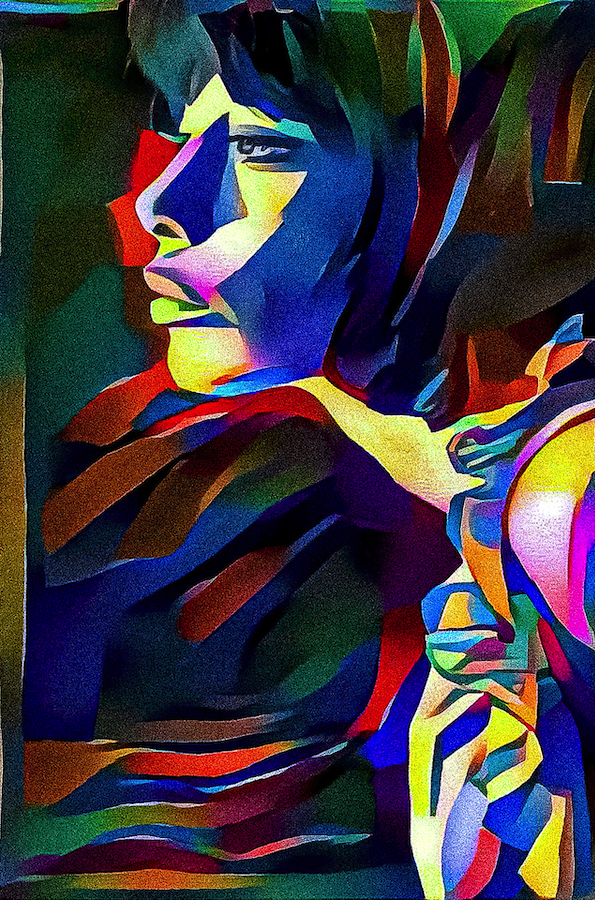“But, what are you thinking, Dad?”
“Nothing” would be his whispered response, “I just feel numb.”
My dad has lived with clinical depression for 25 years, and he is still trying to understand why he has it and how it works.
As a psychologist trained and working in Cognitive Behavioural Therapy (CBT), I tried desperately to help him identify his irrational thoughts so that we could uncover some of his core beliefs. But he gave me nothing to work with.
If there are no thoughts, what can we do? There is nothing to analyze!
Over the last 25 years, I have played a massive part in Dad’s mental health journey. There have been moments I have been dismayed and horrified by the treatments offered to him. Other times, I have been overcome with gratitude for the love and care some medical professionals have shown him.
I have also worked professionally in mental health and have been faced with my own periods of anxiety, burnout, and depression. There are many wonderful techniques we can learn and practice to nourish our psychological well-being (such as CBT). For some, they may be enough to stop (and even reverse) experiences of anxious and depressive responses to life’s challenges. There is, however, one big gaping hole in the way we treat and talk about mental health: this gaping hole in the body.
When we think of mental illness, we think about broken brains, but anxiety and depression are different sides of the same coin. We must adopt a mind-body approach to our treatment and management of these mental health conditions.
How much do we really know about the role of the body when it comes to depression and anxiety? Surely there is wisdom in the word “depressed;” it sounds quite like “deep rest” to me (Jim Carrey alerted us to this). Could it just be our body asking for some downtime?
Did you know, more information travels up from the body to the brain than the brain to the body? And, as the brain’s job is to make meaning out of things, we often create stories around the information coming up from our body.
“Tight chest? Must be nervous about x, y, or z.”
“Churning tummy? It must be that this job/person/experience is not safe.”
Sometimes these body messages are spot-on, but other times they are wildly inaccurate. They can be a result of unresolved past experiences playing out in unhelpful ways in the present. If our past has been unsafe in some way, we, through no fault of our own, may unconsciously interpret that threatening email from a client as a life-or-death situation. That sideways glance from a stranger might feel like a threat to our safety. Our body switches on its survival response too often, and because we are often completely unaware of it, we don’t turn it off.
We must start including the body in meaningful ways when it comes to diagnosis, education, and treatment for depression and anxiety. We need to learn how to accurately interpret these messages from the finely tuned (albeit sometimes out of whack) instrument that is our body. As the body’s language is feelings, we must be educating ourselves and our children in this ancient language.
Intellectually, it makes no sense that those of us who experience anxiety are also more prone to depression. I mean, they seem like the opposite thing. One is up; the other is down. One is future-focused; one is past–focused.
Anxiety often carries with it thoughts like:
>> “What will happen if I fail?”
>> “It has to be perfect.”
>> “It’s all going to go wrong!”
Whereas thoughts associated with depression are more along the lines of:
>> “I don’t care. What’s the point anyway?”
>> “I can’t believe I said/did/wore that!”
>> “I am so hopeless; I will never get anywhere/fit in.”
Opposites, right?
Yes, but intimately connected by one super cool system in our body: our autonomic nervous system (ANS). A clever human by the name of Dr. Stephen Porges has been able to explain to us, for the very first time, why anxiety and depression go hand in hand. His theory is the Polyvagal Theory. (I encourage you to do some of your own research into his work.)
Without getting too technical (to be honest, I am still learning it all myself), we have two branches of our ANS; both are crucial for our survival and thriving.
The first branch is called the sympathetic nervous system (SNS). This is responsible for the essential survival or fight-or-flight response. (Many of us perfectionists out there are familiar with this branch. It is the one that keeps us alert and go, go, going.) We need this system to survive (like to get out of bed and get going) and stay safe (like jump out of the way of an oncoming bus), but unfortunately, for some of us (due to inherited or childhood trauma, genetics, or modeling by our primary caregivers), this system is stuck on “on.” We find ourselves in a perpetual state of stress and anxiety, not just in our brains but in our bodies too.
The second system is the parasympathetic nervous system (PNS). This fabulous piece of artwork is responsible for the “rest and digest” functions in the body. When we are in a PNS dominant state, we sleep well, heal well, and digest well. We respond instead of reacting, and we recover quickly from the inevitable challenges life throws at us.
The bit of new information that we are only just now understanding is that the PNS has two of its own branches. Both are important but sometimes inappropriately used. I’m going to call them the “Connect” and the “Disconnect” branches. Both help slow and settle a frazzled system, but they do it in different ways.
We are born with an undeveloped “Connect” branch; we need to build it from scratch. We learn it from the modeling of our primary caregivers—from their facial expressions and tone of voice. When they smile, speak softly and calmly, we are soothed and settled, and we start to internalize the belief that the world is safe and, as we grow up, we can calm ourselves and recover quickly from stressful events. Interestingly, this is also the part of our ANS that is the least evolved as far as our species goes and is inherently human.
Awesomely, it can be toned through activities such as meditation, other mind-body approaches (yoga, breath practices, chanting), and building meaningful relationships. (The last part, cruelly, can be hard if we have had an unsupportive environment in our childhood.) If our primary caregivers were stressed out themselves, our own development of this calming, soothing “connect” branch may be compromised.
The “Disconnect” branch of the PNS, also known as the “shutdown” branch, is wired into us from birth. It is our “default mode,” and evolution has shown us that it is necessary for our survival. As babies, when we cry and those cries are regularly not attended to, what do we do? We shut down. We switch off, and we go to sleep. Our “Disconnect” PNS comes in and short circuits our over-activated SNS (fight-or-flight or stress) in an effort to help us to survive. It is like our “off” switch.
Having this “off” switch activated some of the time is no big deal; in fact, we want it to be “on” a little bit, but we certainly don’t want it to be the dominant branch of the PNS. (We certainly don’t want to be switched “off” all the time.) This is often referred to as the “freeze” response.
Frozen is certainly what depression can feel like for many of us. When we are in this state, we stop thinking, feeling, tasting, smelling, digesting, and we can tend to either under or over-sleep.
And that, my friends, is why my dear old dad has no conscious thoughts when he is clinically depressed. His system goes into “shutdown,” and, as far as his unconscious mind and his beautiful body are concerned, this is an issue of life or death. After a period of intense stress, his body is trying to help him to get out of fight-or-flight by slamming on the “freeze” function—it is trying to help.
This has been his unconscious habit for around 76 years. He disconnects—for his survival. This is not his fault or his choice. His body chooses for him. His body has needed to choose for him to keep him safe while growing up with an anxious and angry father and then choosing (unconsciously, of course) adult relationships that kept him in this state of fight-or-flight. Sadly, we seem to choose the familiar over the healthy. He was always loved, but his system never felt safe. Not as a child and not as an adult.
So, this is the missing piece to the puzzle. This information changes everything about the way we diagnose and treat anxiety and depression.
So what can we do to support ourselves and our loved ones to build capacity to self-sooth through engaging the “Connect” side of the PNS?
We can do a lot! It takes time to tone the nervous system, but it can be done.
Here are some ideas that continue to help me, my clients, and my dear old dad:
>> Mindfulness
We need to spend time getting to know ourselves, our minds, bodies, and hearts. Mindfulness is the loving light of awareness, and through simply paying clear and kind attention to our internal and external experiences, we can make wiser choices to support ourselves and manage our stress response (and perfectionistic tendencies…just as an example). We can become aware of our automatic thoughts and start to disentangle these from our emotions and our bodies.
>> Meditate
We have the science now that shows us that meditation works. It fundamentally changes the way our minds, bodies, and hearts work. It, of course, is not a silver bullet, but it is an important part of our healing and growth.
>> Body practices
Do what works for you: yoga, tai chi, swimming, running. We have to come back to the power of the body and start to listen to her whisper. We can learn from her wisdom and start to heal the patterns we may have learned or inherited that are no longer serving us.
>> Relationships
We are neurobiologically wired for connection. The quality of our relationships is the strongest predictor of happiness and well-being for us humans. This has been well-documented many times over; we now know why. Through the “connect” branch of the PNS, other humans soothe our frazzled nervous systems and bring us back into balance. In this digital world, we must make time to cultivate love, belonging, and connection. Our survival and thriving rely on it.
There is so much more for all of us (me included) to learn, but what we can do now is practice.
We can love ourselves and each other—madly and deeply.
We can remember we belong to something bigger than ourselves—that, at the end of the day, connection is all that matters.









Read 1 comment and reply